
Extracting Amazon Sales Data: Excel Life Hacks
Published on September 18, 2023by BotsterIf you are an Amazon seller, you probably know how challenging it can be to try and extract data from Amazon to Excel.
Amazon holds in its database a ton of data and information that can be helpful to your sales and success as an Amazon seller. However, it takes work to access, download, or analyze it in a spreadsheet.
When researching markets and industries on Amazon, manually copying and pasting data from the Amazon website into Excel can be stressful and time-consuming.
💡 Fortunately, there are some easy-to-use automation tools that will help you quickly extract data from Amazon to Excel with just a few clicks.
 In this step-by-step guide, I’ll show you:
In this step-by-step guide, I’ll show you:
- How to find and analyze your competitor on Amazon
- How to conduct Amazon product research and market analysis
- Simple and easy-to-use software that can help you automate 1 and 2 above and also extract their data in BULK; and
- Some Amazon-Excel hacks to better use the data you gather from these tools.
Why extract data from Amazon to Excel?
There are quite a number of reasons why Amazon sellers should extract certain information from Amazon to Excel files. These include:
- To check for data changes over time, such as price fluctuations, customer reviews, ratings, best sellers rank, etc. This can help sellers to optimize their pricing strategies, monitor customer feedback, and identify market trends.
- To spy on competitors and analyze their products, prices, reviews, ratings, keywords, etc. This can help sellers to gain competitive advantages, improve their product listings, and target the right customers.
- To find best-selling products within Amazon search results and discover profitable niches and keywords. This can help sellers to expand their product portfolio, increase their sales, and grow their business.
While there are more reasons to extract data from Amazon to Excel, these 3 are probably the most important.
Now, to put this guide in perspective and aid learning, I will act as an Amazon merchant who’s trying to sell office desks and walk you through the necessary steps.
If you’ve been looking for how to get data from Amazon to Excel, this is the last guide you would have to read.
Now, let’s get started!
Amazon/Excel case study
Extracting GENERAL search results to an Amazon Excel spreadsheet
First, I’d like to go through product research. This can be helpful if you need to find the best-selling product in a niche you’re just getting into.
For this step, we will use the Amazon Search Extractor bot which you can use to get an Amazon product hunting Excel sheet. In simple terms, this bot extracts a list of products from Amazon based on search keywords that you provide.
To use the Amazon Search Extractor, you must first open an account with Botster, an automation software hub:
 Registration on Botster is free and easy, and your credit card details are not required. Once you’ve confirmed your email, proceed with the guide below:
Registration on Botster is free and easy, and your credit card details are not required. Once you’ve confirmed your email, proceed with the guide below:
- Launch the Amazon Search Extractor’s start page by clicking on “Start Bot”:

- Next, name your job and specify a folder if you wish.
I’ve named mine “Amazon Excel sheet”:
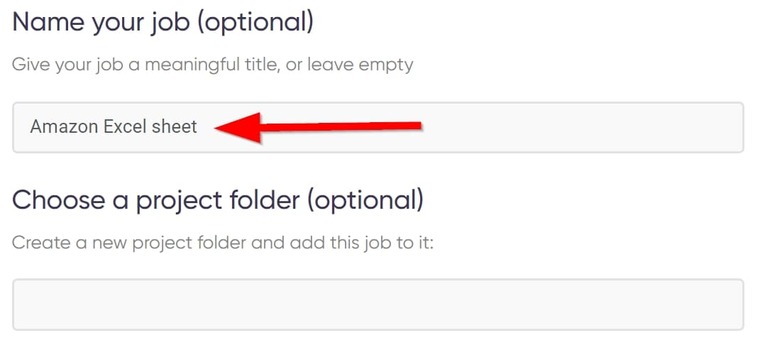
- Next, enter your keywords.
Since I sell office equipment (hypothetically), that would be my keyword. If you wish to enter more than one keyword, make sure each one is on a different line:

- Next up. Set your custom options which include your desired language and location:
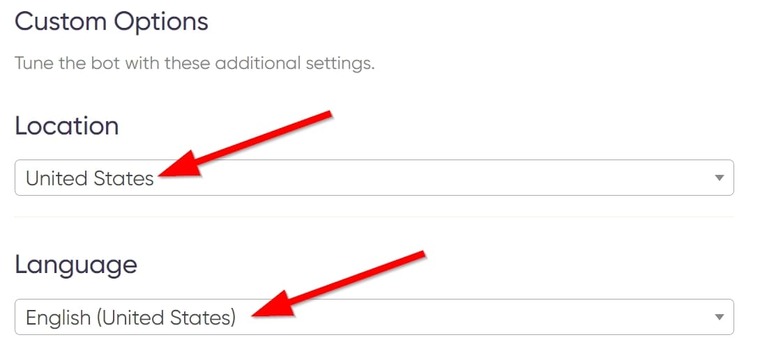
- If you would like this software to run this query regularly, then check “Run this bot periodically”:

Once you click on that, it will bring up further scheduling settings. Now set your desired periodicity:
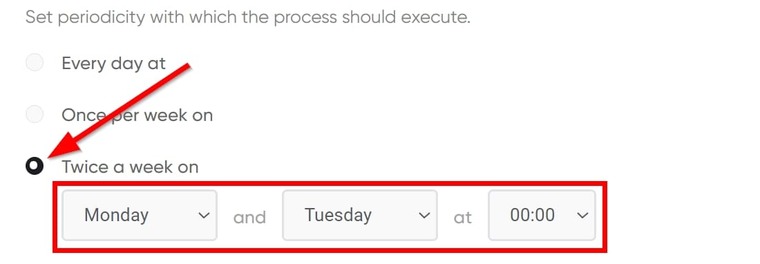
Also, set up your terms for expiration. You can let it run for eternity or set a termination date:

- Finally, set up your notification options and select your desired file type.
Make sure you tick “Attach results to the notification email” at the end so you may receive the results automatically:
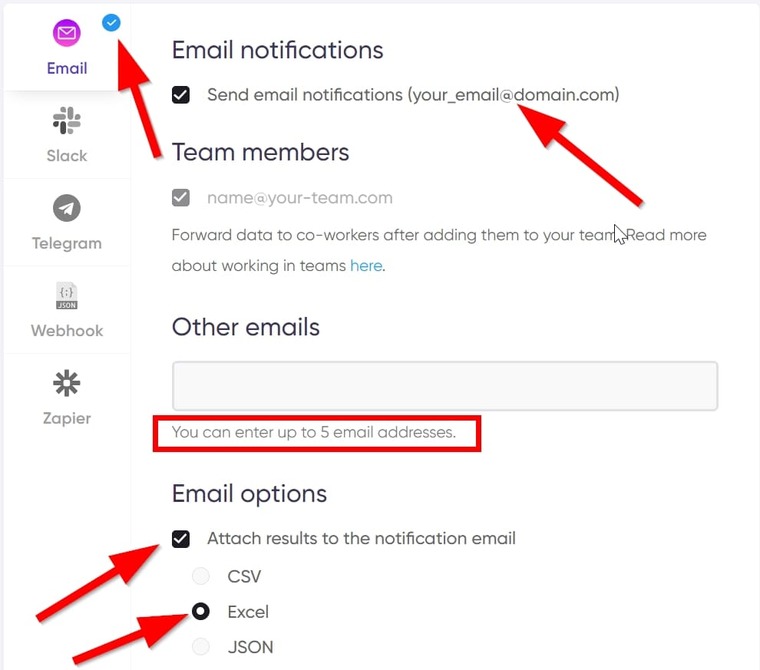
- Once that’s done, click on “Start this bot” to launch the Amazon Search Extractor into action.
 I bet that’s one of the easiest processes you’ve ever seen. Correct?
I bet that’s one of the easiest processes you’ve ever seen. Correct?
Video tutorial
And to make things even better, I’ve prepared a video guide so you can actually see me use this bot. As you’ll see in the video, using this bot takes just about 3 minutes:
Results
Clicking on “Start this bot” automatically opens the “My Jobs” page where you’ll see something like this:
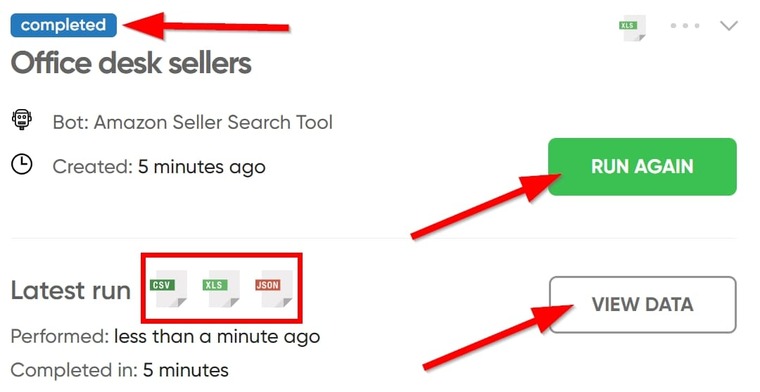 While some of the info here may be different depending on your schedule choices earlier, you can click on “Run Now” to run the bot immediately, or “Stop” to eliminate the project.
While some of the info here may be different depending on your schedule choices earlier, you can click on “Run Now” to run the bot immediately, or “Stop” to eliminate the project.
If you click on “Run Now”, the bot will immediately perform a crawl and send you an email:
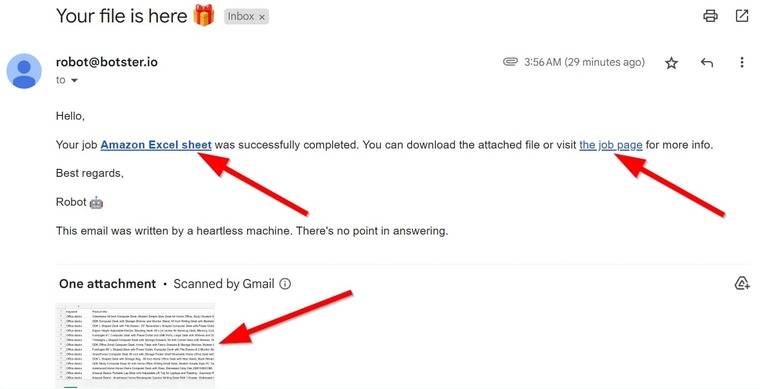 You can download the attached Amazon product listing Excel file or click on the link within the email, then scroll down to select another download format or view the results online:
You can download the attached Amazon product listing Excel file or click on the link within the email, then scroll down to select another download format or view the results online:
 Opening the downloaded file in Microsoft Excel will give you this:
Opening the downloaded file in Microsoft Excel will give you this:

Tips on how to make the best of the Amazon Microsoft Excel sheet
- Sort the results by price to see the highest and lowest prices in the industry. To be on the safer side, it would be advisable to offer products that are not too expensive nor too cheap.
- The next thing to do would be to sort the exported products by rating. You want to see which products have the highest rating count and which ones have the lowest rating count. A high rating count may indicate high sales on that particular product.
- Sorting by seller will arrange the other merchants in alphabetical order. Hence you can see if one merchant has a different listing for the same product and what differences exist between each listing.
- Also, if you’re into Shopify automation, these Shopify automation software tools are a must-have for you.
Making an Amazon SELLER Excel spreadsheet
Now that we have an Excel file of the current listings of our product, we can further our research and find insights on the sellers who listed them for sale. For that, we’ll use the Amazon Seller Search Tool. It will find Amazon sellers of a particular product and export information about them into an Amazon seller Excel spreadsheet for you to download.
Follow the steps below to extract seller information using the Amazon Seller Search Tool:
- Launch the Amazon Seller Search Tool’s start page and name your job like I described earlier.
- The second step requires you to enter ASIN codes of products. These will then be used to find and extract the seller info for those products.
In the result you got from the last bot, there’s a column titled “ASIN”. Simply copy and paste the content of that column and paste them here:
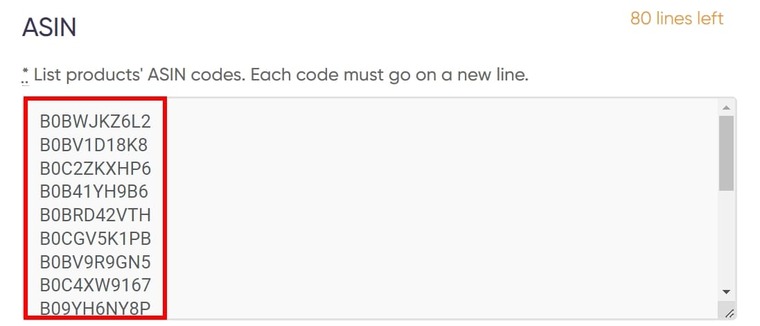
- Now click on “Start this bot” and that’s it! You’re done.
The same as in the last tool we used, clicking on “Start this bot” will launch the “My Jobs” page. But things will look slightly different:
 From here, you can immediately choose to run again, view results online, or download your files in a variety of formats (the logos in red box).
From here, you can immediately choose to run again, view results online, or download your files in a variety of formats (the logos in red box).
Video tutorial
Watch me explain how to launch the Amazon Seller Search Tool in this quick video:
Results
Whether you view the results online or download them to your computer, you’ll get something like this:
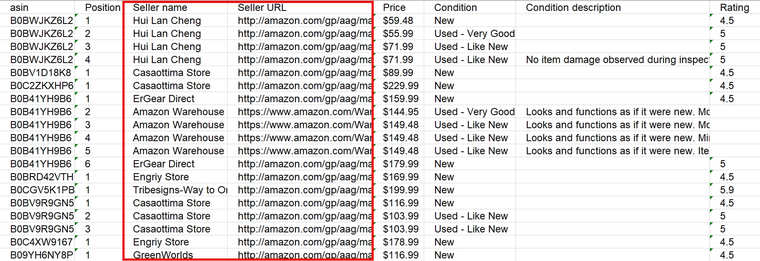
Tips on how to use your Amazon seller Excel spreadsheet
- Same tips apply here as in the previous data, sort the results by price to see the highest and lowest prices in the industry.
- Also sort by rating to see which products have the highest rating count and which ones have the lowest rating count.
- Sorting by condition lets you see the state of a product. A product with a seemingly lower-than-average industry price may be refurbished or used.
Viewing an Amazon PRODUCT list in Excel
To further our competitor research (since we now have a list of sellers who sell the same product as us), we will examine their stores and find what information we can glean from there.
To help with this, I’d like to introduce the Amazon Seller Products Scraper that can help download an Amazon inventory Excel file without any hiccups.
The Amazon Seller Products Scraper can easily grab the following details:
- Seller ID
- ASIN
- Description
- Review count; and more
To extract our competitors’ products into an Amazon Excel spreadsheet in BULK using this automation software, follow the steps below:
- Launch the Amazon Seller Products Scraper’s start page and name your job as usual.
- Next up, select the number of products for the bot to scrape:

- Enter Amazon’s domain you wish to extract from.
If you’re targeting Amazon US, skip this step. Otherwise, proceed.
Amazon operates in over 20 countries with different domains (e.g. .com, .fr, .de, etc.). You can find the desired domain on this page. Select your preferred country and click on ‘Go to website’:
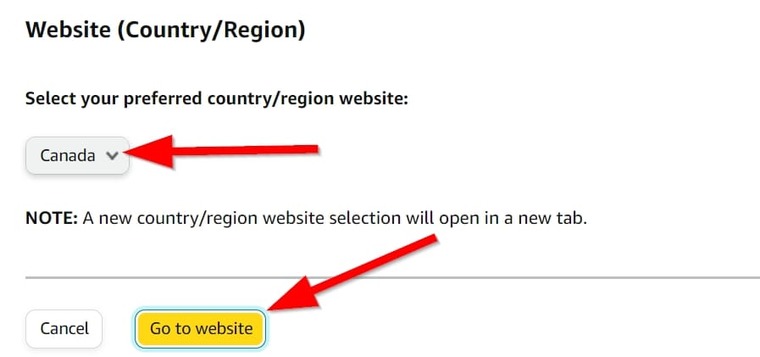
You’ll see the domain for the country you pick, e.g., “.ca” for Canada, “.com.au” for Australia:
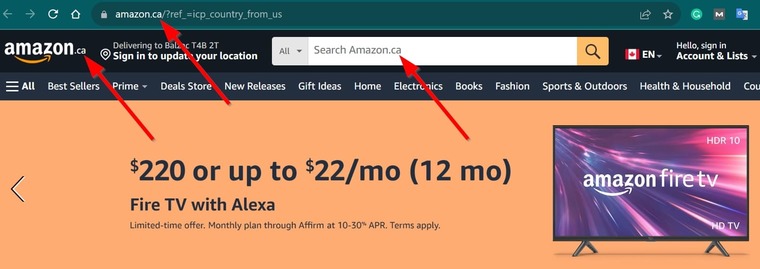
Go back to the bot’s page and enter the correct domain:

- In the next textbox, you’ll need to enter the seller ID.
To find the seller ID:
✅ Open the Amazon merchant Excel file exported by the Amazon Seller Search Tool above.
✅ Navigate to the column labeled “Seller URL”.
✅ Copy the part of the URL between the ‘=’ and ‘&’ symbols:
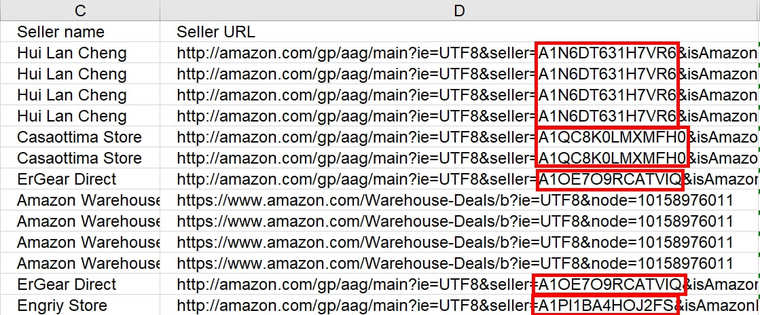
✅ Paste the seller ID into the field in the software we’re using. Note that you can only paste one Seller ID into the textbox:

- Aaand, click on “Start This Bot”!
That’s a cakewalk, ain’t it?
Now, you just need to stand by while the Amazon seller reporting tool, the Amazon Seller Products Scraper, compiles your results.
Video tutorial
Watch a quick video guide on how to launch the Amazon Seller Products Scraper:
Results
Once the bot beeps (audio notification) that your job is ready, you can download the file or click on “View Data” to see the results:

Tips
- Sort the data by price to easily determine the costliest and cheapest products on the merchant’s Amazon page. You can then compare their products to yours to see how you match up.
- Sort by rating to see which of this seller’s products has the highest and lowest rating from consumers and find ways to provide better service.
- You can also sort by reviews count to see which product has the highest/lowest review count, meaning that it’s more/less popular than other products.
- If you’re still not sure which products to sell, this guide on how to choose the right product to sell on Amazon is an excellent resource for you!
So far, in this Amazon/Excel case study, I have introduced to you 3 automation tools that can help you with product and competitor research. Not only can they help you get an overview of the landscape in your industry, they are also kinda an Amazon price scraping to Excel tool since they all extract product prices when they operate.
Now nearing the end of this Amazon-Excel for dummies guide, I’d like to introduce the last software.
Exporting product REVIEWS to an Amazon Excel sheet
Now finally, we will be extracting reviews for each of the products we exported using the first bot (the Amazon Search Extractor). These reviews will help you:
- To get insights into customer pain points and needs.
- To identify the strengths and weaknesses of your competitors' products.
- To learn from your competitors' mistakes.
- To get ideas for new features and benefits.
- To gauge the overall market sentiment for a product.
For this step, we’ll use the Amazon Review Extractor and the ASIN codes of the products, which you can find in the Amazon product list in Excel we first downloaded using the Amazon Search Extractor.
The Amazon Review Extractor will retrieve the following data:
- ASIN
- Verified status
- User name
- User avatar URL
- Reviews count
- Locations
- Title
- Review text
- Publication date
- And more.
Now without wasting time, follow the steps below to extract your competitors’ reviews using this magnificent Excel-Amazon review extractor:
- Open the Amazon Review Extractor’s start page and name your job.
- Copy the ASIN codes from the Excel file I described above (i.e. the one exported by the Amazon Search Extractor):

- Paste the ASIN codes into the “ASIN list” box.
Note that you can only paste up to 5 ASIN codes at once:
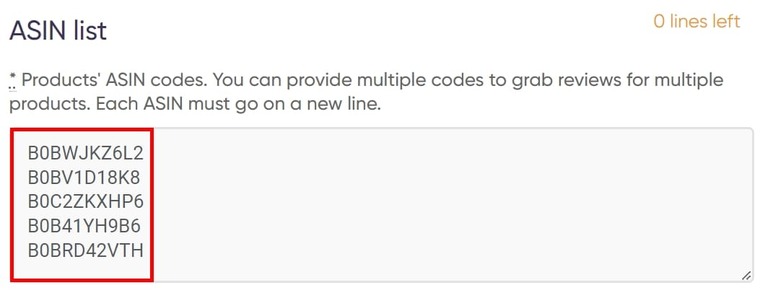
- Set how many reviews you want per product:

- Set the language code.
For a full list of language codes check out this file.

- Set the Amazon domain.
If you’re not sure of the Amazon domain where you extracted these products, check the product URL in the Excel file:

Now input the domain into the software:

- Once you’ve done that, launch the bot and that’s it!
Easy peasy! If you wish though, you can tweak the filter options before launching the bot to action.
Now, that’s how to export an Amazon list to Excel!
Video guide
If you’d prefer a video walkthrough of this process, here’s one I made earlier:
Results
Once the Amazon Review Extractor is done fetching the data you requested, you can click on “View Data” or download the file to see the results:

Tips
- The first thing you can do is sort the data by publication dates to see either the newest or oldest first. Recent reviews provide better insight into a product since they usually refer to the current state of the product.
- You can also try sorting by rating value to determine the authenticity of a review. This is necessary since certain reviews may have been paid for by the seller in order to get good ratings.
- Are you interested in finding even more tools for Amazon sellers? My guide on the best tools for Amazon sellers is just what you need!
How Much Does Amazon Excel download cost?
By now, you’ve probably guessed that the tools described in this Amazon/Excel case study are not free 😏
Well, you’re not off the mark, but I won’t say you’re totally correct either. See, these tools cost so little, you most likely won’t know you’re paying!
Consider this:
- Extracting Amazon search data with the help of the Amazon Search Extractor costs just $0.05 per run irrespective of how many keywords you enter.
- Finding Amazon sellers using the Amazon Seller Search Tool costs just $0.05 per ASIN code you enter, and for 10, you’d pay just $0.50.
- Using the Amazon Seller Products Scraper, you can extract up to 30 products at once, and that costs just $0.60.
- Extracting 10 reviews with the help of the Amazon Review Extractor costs $0.025 per ASIN code. Above, I extracted 50 reviews each for 5 ASIN codes and that cost just $0.65.
Now, isn’t that something? All that data for under $5.
The best part though is the fact that you can enjoy a free trial if you open an account with Botster right now and start to extract data from Amazon to Excel in no time.
If I were you, I’d pause whatever I’m doing and get started right away!

